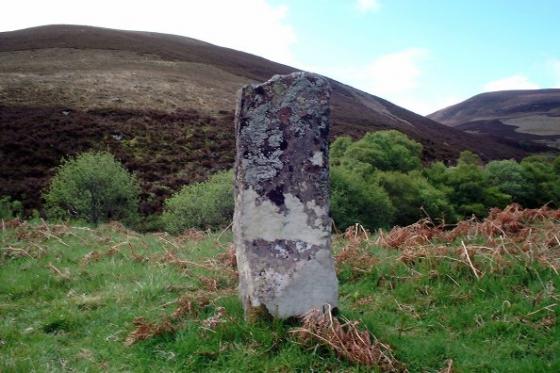
Only issue is the broch sits upon the opposite bank of the river....

Only issue is the broch sits upon the opposite bank of the river....

Still in place after a couple of millennia... mortar or no mortar.

Pausing mid-stream.... nice one, Nick.

From across the Loth Burn.

More courses of the outer skin...



Easy to see how Carn Bran could be thought to be a cairn from distance.... basically that’s what it is, to all intents and purposes. Anyone got a Victorian broch excavator in their freezer to give this a good clean out?

Closer inspection reveals quite a few courses of walling still in place beneath the vegetation. Looking up Glen Loth.

Although pretty trashed, I took this to be the remains of a mural passage.....

The broch sits on the far bank of Loth Burn. Unlike during Nick’s visit, the water was low enough to scramble across. Without falling in, as well.


Although little more than a mile along the minor road traversing Glen Loth (if heading from the A9, that is) the shattered remains of this broch occupy a position in the landscape seemingly several light years away from the tourist trail when it comes to vibe. What an superb location! Although, to be fair, it’s difficult to visualise a big, hairy Iron Age warrior chieftain standing here, spear, battleaxe – or whatever- in hand and exclaiming “Such is the exquisite beauty of this landscape, sweeping contours of sublime precision echoing the pulsating life-affirming natural forces inherent within the fast flowing water.... that I am compelled, by the mighty Odin (in an admittedly uncharacteristic moment of all consuming altruistic euphoria), to erect a great big bloody dry stone defensive tower here to consolidate my power and vanquish my enemies. At this very spot”. Then again ....
For all the idyllic splendour there is, however, a catch which potential visitors should be aware of. Namely, as Nick points out, that the broch stands upon the opposite bank of the Loth Burn from the road. Ah... Luckily I was able to make my way across the lively water without having to remove the boots, thanks to several strategically placed rocks breaking the surface at opportune points. I can well imagine occasions when this will not be the case.
As mentioned at the start, Carn Bran is, on the surface, a tumbled mass of collapsed stonework far removed from the likes of the nearby Cinn Trolla. Nevertheless a few courses of walling can still be discerned within the chaos, together with the positions of a (couple?) of intra-mural chambers confirming that this is indeed a broch and not, as the name might imply, a cairn. I wouldn’t have minded the latter at all, to be fair. But then again finding a broch located in such a classic position overlooking a far from placid burn is pretty special.
I sit drinking my coffee, gazing along the glen and wonder how much of the original structure still remains in situ, subsumed within the stone pile? Yeah, on balance, despite the captivating ethereal atmosphere here, I reckon it would be a very worthwhile exercise to excavate Carn Bran and perhaps reveal its former archaeological glory.
This “cairn” is, in fact, the Carn Barn broch.
As Lianachan correctly points out, this is in fact the remains of the broch and not a cairn! I couldn’t get across the river to this one, so had to content myself with a couple of photographs. In dry weather it may be possible to ford the Loth, but not after the rain there had been some days I was up there! Don’t make the same mistake I did and assume the sheep-fold just north of this as the broch....
This site features in Macpherson’s Ossian poems of the 18th century. Even at the time people thought they were Rather Imaginative. But given that all folklore’s imaginative, perhaps it doesn’t hurt to mention his take on the stones, and who knows, perhaps it was a real local story after all.
So it seems the legendary Fingal brought his dog Bran over to Scotland when he visited the local chief. And the Sutherland chief had his own dog, Phorp. But the dogs had an altercation, quite a bad one really, where Phorp got his heart ripped out. This is supposed to have been at ‘Leck na Con’ (the stone of the dogs) between Clyne and Wildonan. And Bran didn’t come off so well either and had to be buried in Glen Loth – which is why this place is called Carn Bran.
(Summarised from the summary in ‘The illustrated book of the dog’ by VK Shaw, 1881).
Carn Bran taken in 1911.










































